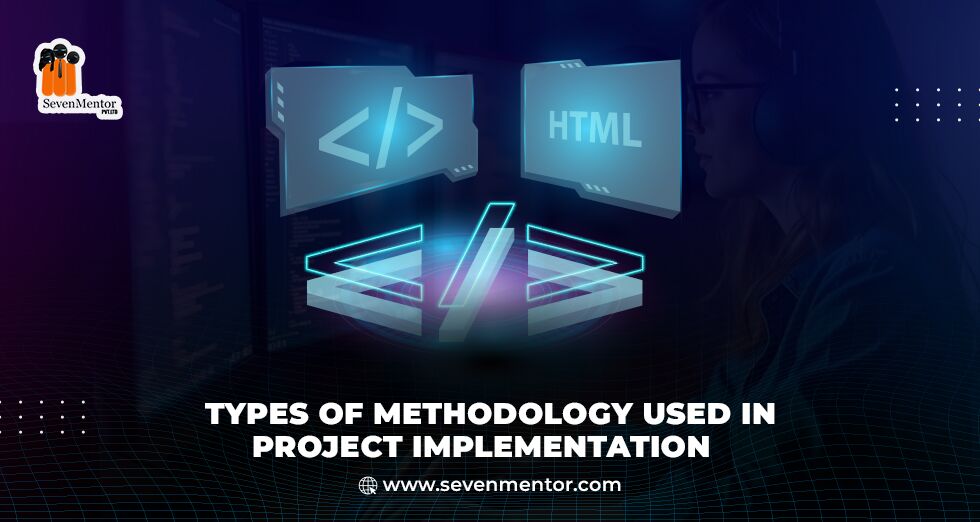Types of Methodology Used in Project Implementation
In the realm of project management, selecting the right methodology is a crucial factor in determining the success of a project. Methodologies provide structured processes, enabling teams to streamline activities and meet their objectives effectively. Different methodologies suit different types of projects, ensuring that every challenge is addressed with a tailored approach. Below, we explore the most commonly used methodologies in project implementation. Discover the various types of methodology used in project implementation, including Agile, Waterfall, Scrum, and more, to ensure successful project execution.
1. Waterfall Methodology
One of the earliest and most traditional approaches to project management is the Waterfall methodology. This method is linear and sequential, which means that each phase of the project must be completed before moving on to the next one. It is best suited for projects where requirements are well-defined and unlikely to change during the process, such as in construction or manufacturing.
In a Waterfall approach, project stages like requirements gathering, design, development, testing, and deployment are distinctly separated. This methodology ensures thorough planning and a clear understanding of what needs to be done at each stage. However, its rigidity can be a disadvantage if unexpected changes arise, as it doesn’t easily accommodate modifications once a stage is completed.
2. Agile Methodology
Agile has become one of the most popular project management methodologies, especially in industries that demand flexibility and speed. Unlike Waterfall, Agile is iterative and incremental. This means that the project is broken down into smaller, manageable units called “sprints,” with each sprint typically lasting between one to four weeks.
The Agile approach prioritizes collaboration, continuous improvement, and adaptability. Teams regularly review their work and make adjustments as needed, allowing for a more flexible response to changing requirements. Agile is particularly useful for software development projects, where customer feedback and evolving technologies can drive changes during the project’s lifecycle.
One of the major advantages of Agile is its emphasis on customer involvement throughout the process. Regular reviews and feedback loops ensure that the end product is aligned with customer expectations, leading to a higher level of satisfaction. However, the Agile method can be challenging for projects with fixed budgets or strict timelines, as the scope may evolve over time.
3. Scrum Methodology
A subset of Agile, Scrum is a framework that facilitates project implementation in an organized and structured way. Scrum divides the project into smaller tasks called “user stories,” which are grouped into sprints. These sprints typically last between two to four weeks and are aimed at achieving specific, tangible deliverables.
One of the core components of Scrum is the daily stand-up meeting, where team members discuss their progress, any roadblocks, and their plans for the day. Scrum emphasizes a strong team dynamic and collaboration, with a Scrum master facilitating the process and removing any obstacles to team productivity.
Scrum is particularly effective in projects that require constant changes and feedback, such as in product development or software creation. Its clear structure, including roles like Product Owner, Scrum Master, and Development Team, ensures accountability and efficient progress. However, it requires significant discipline and commitment from the team, which can sometimes be difficult to maintain.
4. Lean Methodology
Lean methodology is rooted in the concept of maximizing value by minimizing waste. Derived from manufacturing processes, particularly the Toyota Production System, Lean focuses on streamlining processes to eliminate inefficiencies. This approach is centered on delivering value to the customer with as few resources as possible, while simultaneously reducing waste and cost.
In project implementation, Lean requires teams to continuously evaluate their workflows, eliminate unnecessary steps, and focus on activities that provide value. It is especially beneficial for projects that need to operate with limited resources or where time-to-market is critical. The challenge with Lean is that it requires careful monitoring and a keen understanding of what constitutes waste versus value.
For Free, Demo classes Call: 020-71177008
Registration Link: Click Here
5. PRINCE2 Methodology
PRINCE2, which stands for Projects in Controlled Environments, is a highly structured project management methodology. It provides a detailed framework that focuses on clearly defined roles, responsibilities, and processes. PRINCE2 is often used in large-scale projects, particularly in the public sector or government-related initiatives, where formal documentation and rigorous controls are necessary.
The methodology divides the project into distinct stages, each of which has its own specific objectives and deliverables. One of PRINCE2’s strengths is its focus on risk management, ensuring that potential issues are identified early and mitigated. However, its structure and complexity can make it less flexible and may require additional resources to manage.
6. Kanban Methodology
Kanban is a visual project management methodology that focuses on continuous delivery. It is based on the idea of managing work in progress (WIP) and optimizing the flow of tasks through a system. Kanban uses boards to visually represent the workflow, making it easier for teams to see what tasks are in progress, what needs to be done, and what has been completed.
The Kanban methodology emphasizes transparency, flexibility, and a smooth workflow. It’s most commonly used in environments that require rapid delivery, such as software development, manufacturing, and service industries. Kanban’s flexibility allows teams to adapt easily to changing priorities. However, it requires continuous monitoring to ensure that work is efficiently processed.
Choosing the right project management methodology depends on several factors, including project scope, complexity, timeline, and the need for flexibility. While methodologies like Waterfall offer structure and predictability, Agile, Scrum, and Lean provide adaptability and customer focus. PRINCE2 delivers control and governance, while Kanban enhances workflow efficiency. By understanding the unique features of these methodologies, teams can select the one that best aligns with their project’s goals, ensuring successful implementation and timely delivery.
Visit our channel to learn more: Click Here
Author:
Dipak Ghule
Call the Trainer and Book your free demo Class For Software Development Call now!!!
| SevenMentor Pvt Ltd.
© Copyright 2021 | SevenMentor Pvt Ltd.

